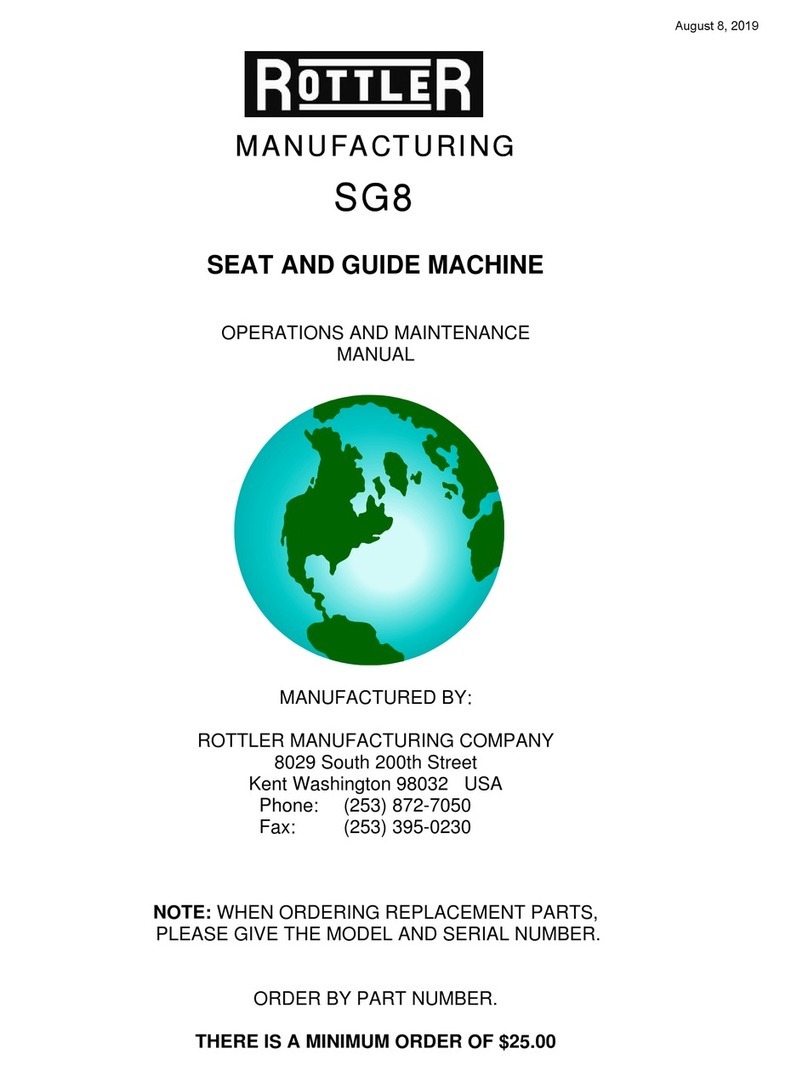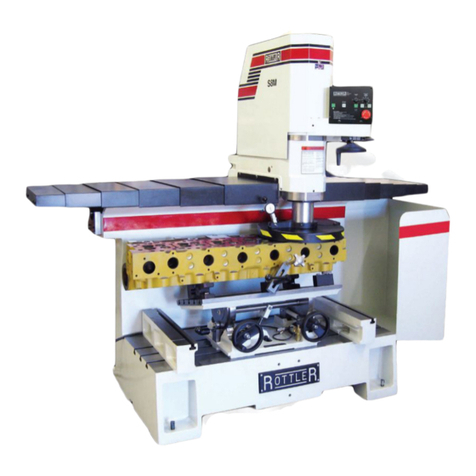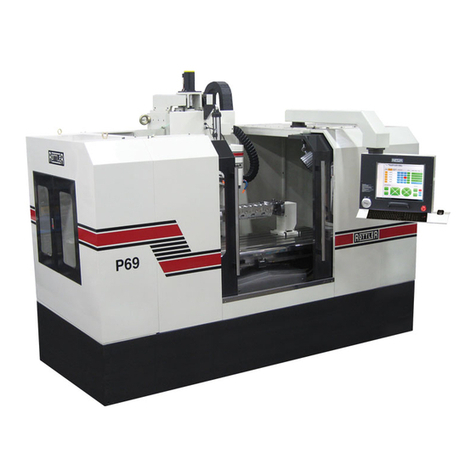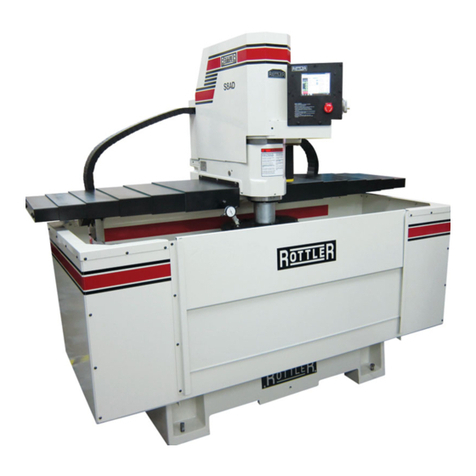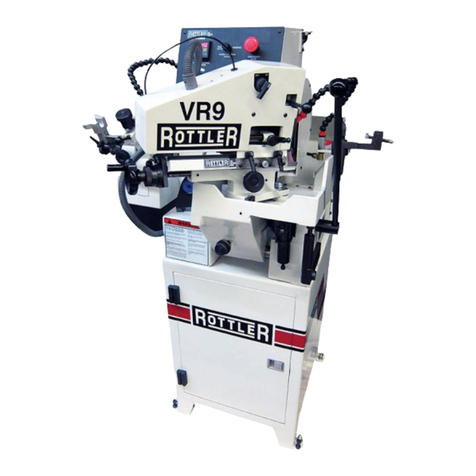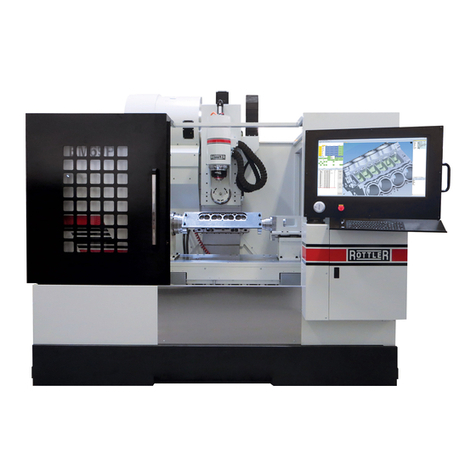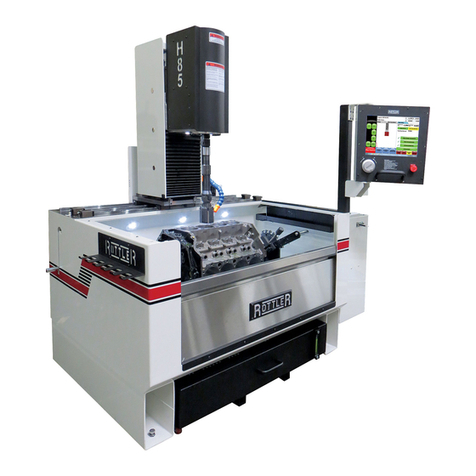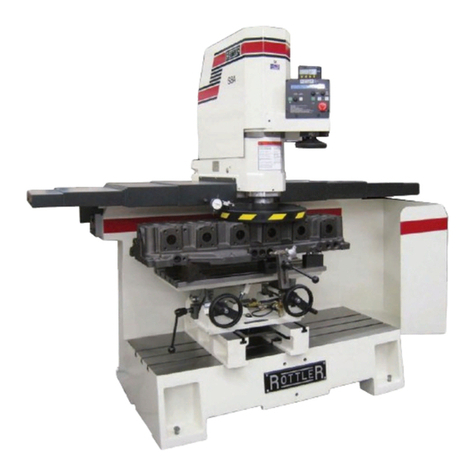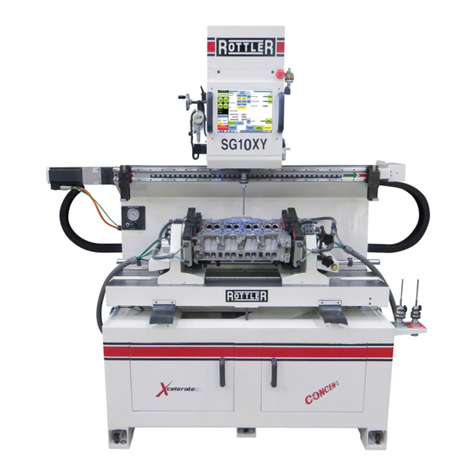
SG8A Manual Contents: 2 6/11/2010
www.rottlermfg.com
Mounting Cylinder Heads:............................................................................................................................ 7-1
360 Degree Rollover Fixtures..............................................................................................................................................7-1
Utilize the grooves in the table to align the trunion supports square to the machine...........................................................7-1
Chapter 8 Overhead Cam U Clamp System ..........................................................................8-1
Alignment and Setup:..........................................................................................................................................................8-3
Front to Rear Cylinder Head Alignment: ............................................................................................................................8-3
Left to Right Alignment: .....................................................................................................................................................8-3
Chapter 9 Selection of the Pilots: ..........................................................................................9-1
Aligning Cylinder Heads which have Canted Valve Guides...............................................................................................9-1
Core Drilling and Reaming Valve Guides:................................................................................................... 9-2
Using RS500 Rottler Spindle Adapter and Collet Holder .500” (12.7mm):........................................................................9-2
Cutting Counter Bores for Seat Rings:................................................................................................................................9-3
Adjusting the Square Carbide Inserts:.................................................................................................................................9-3
Tapping Operations:............................................................................................................................................................9-4
Three Angle Seat Cutting:............................................................................................................................. 9-4
Changing the Spindle Adapters:..........................................................................................................................................9-5
Installing the Spherical self Aligning Toolholder:...............................................................................................................9-5
Chapter 10 Spindle to Work: ................................................................................................10-1
Chapter 11 Control Definitions: ...........................................................................................11-1
Computer and Controller Definition:......................................................................................................... 11-1
Master Power On/Off Switch:...........................................................................................................................................11-1
Getting Started:..................................................................................................................................................................11-1
Power Up:..........................................................................................................................................................................11-1
Initialization Screen:..........................................................................................................................................................11-1
General Information:.................................................................................................................................. 11-1
Head Select:.......................................................................................................................................................................11-1
New: ..................................................................................................................................................................................11-1
Edit Head Model: ..............................................................................................................................................................11-1
Delete Head:......................................................................................................................................................................11-1
Mode Select: ................................................................................................................................................ 11-1
Programming the vertical stops & Dwell Options...................................................................................... 11-1
Homing:.............................................................................................................................................................................11-1
Building Programs:..................................................................................................................................... 11-2
Seat Cutting Mode:............................................................................................................................................................11-2
Setting Zeros: ....................................................................................................................................................................11-2
Vertical Zero: ....................................................................................................................................................................11-2
Start the spindle.................................................................................................................................................................11-2
Start Auto Cycle:...............................................................................................................................................................11-3
Chapter 12 Safety Tips Before Proceed machining: ..........................................................12-1
Operation Tips before Machining Valve Seats:.......................................................................................... 12-1
Seat machining Suggested RPM Chart..............................................................................................................................12-1
Chapter 13 Troubleshooting: ...............................................................................................13-1
Eccentricity Problems when Cutting Three Angle Seats: .......................................................................... 13-1
Adjusting and aligning the outer spindle on SG models ............................................................................ 13-3
Chapter 14 Consumable Parts .............................................................................................14-1
Chapter 15 Carbide Inserts:..................................................................................................15-1

